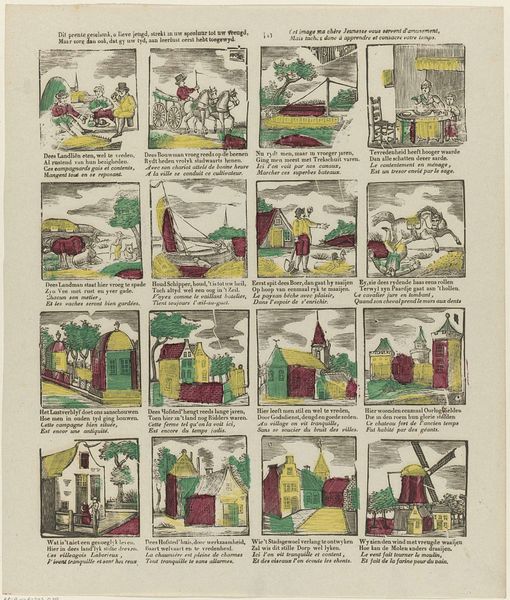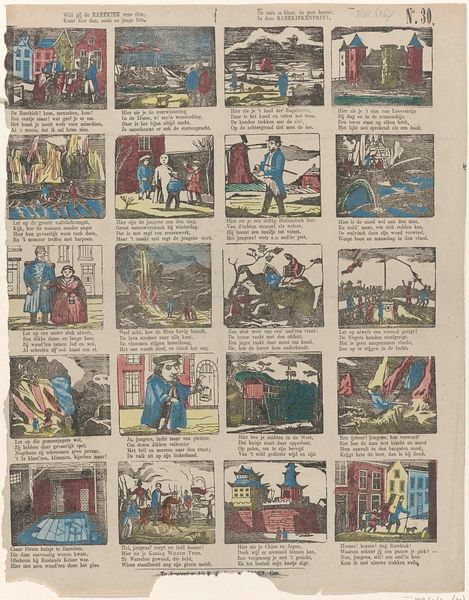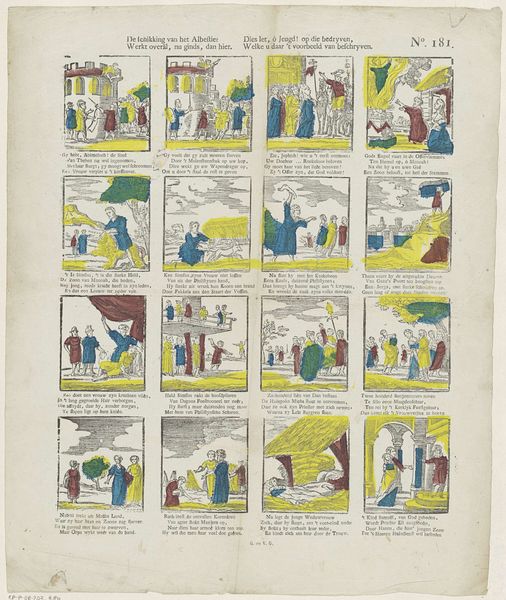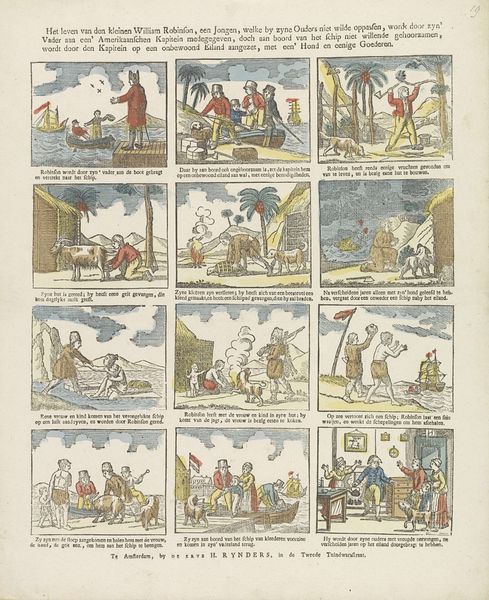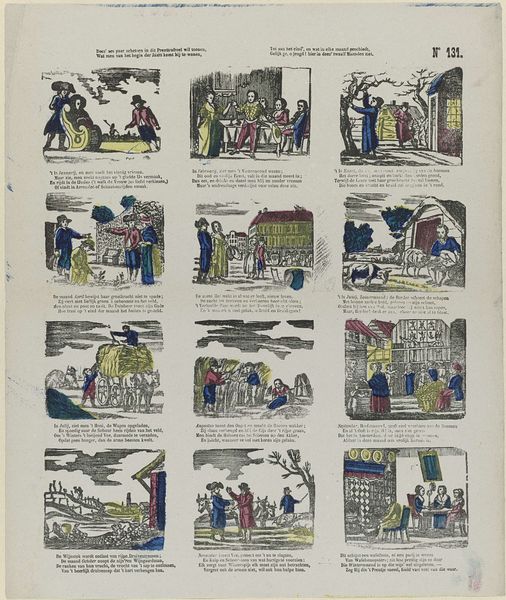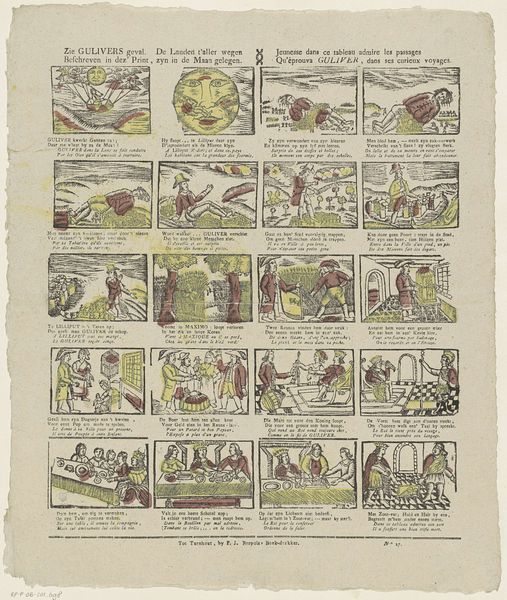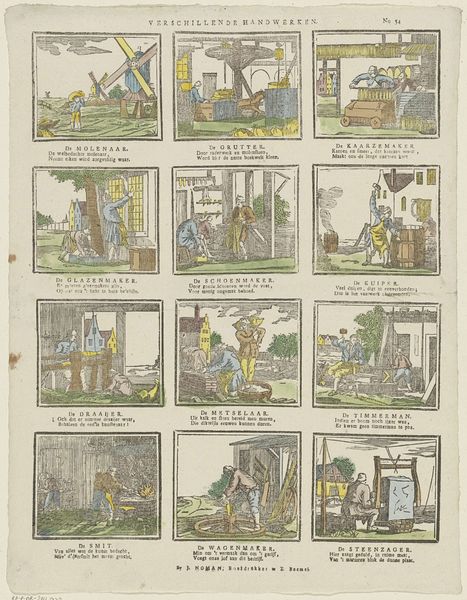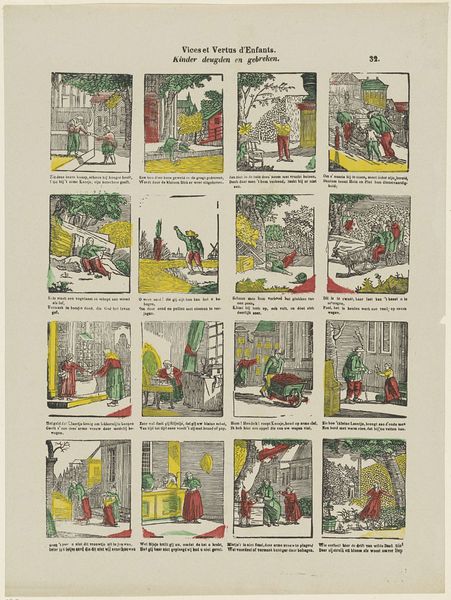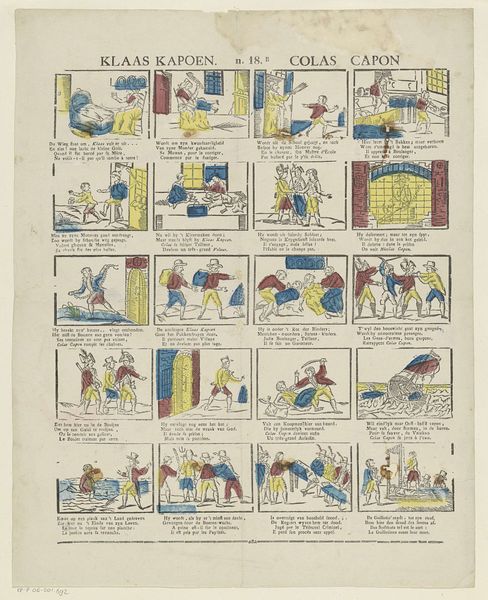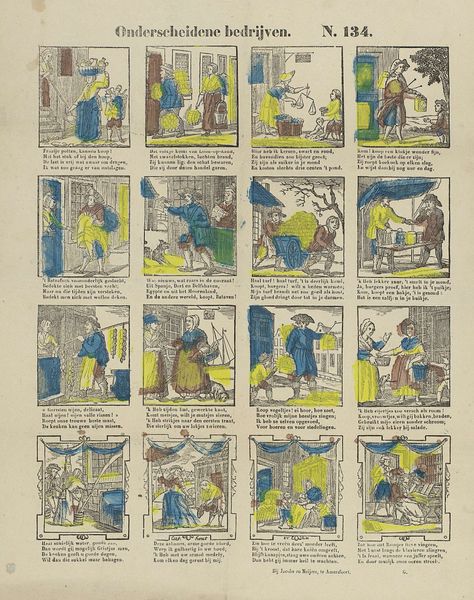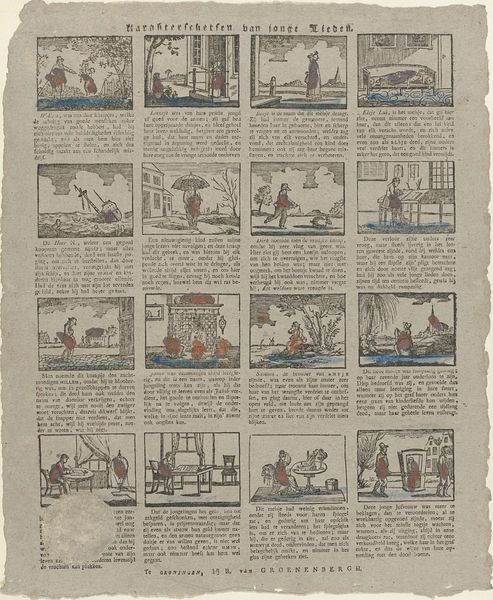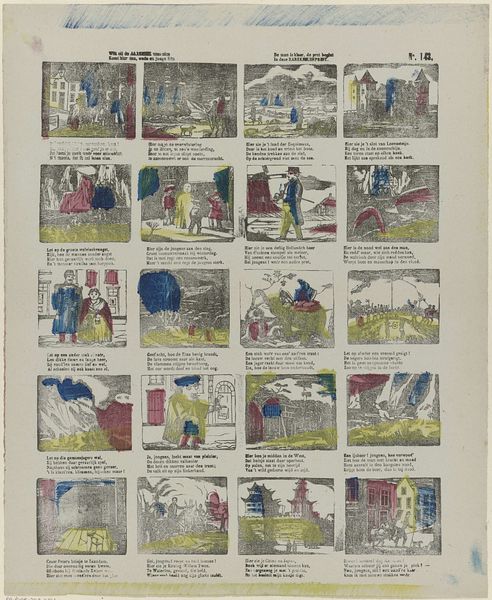
Dit prente geschenk, o lieve jeugd, strekt in uw speeluur tot uw vreugd, / Maar zorg dan ook, dat gy uw tyd, aan leerlust eerst hebt toegewyd / Cet image ma chère jeunesse vous servent d'amusement, Mais tachez done à apprendre et consacre votre temps 1856 - 1900
0:00
0:00
graphic-art, print, engraving
#
graphic-art
#
narrative-art
# print
#
engraving
Dimensions: height 395 mm, width 320 mm
Copyright: Rijks Museum: Open Domain
Curator: This artwork, a print titled "Dit prente geschenk, o lieve jeugd, strekt in uw speeluur tot uw vreugd, / Maar zorg dan ook, dat gy uw tyd, aan leerlust eerst hebt toegewyd / Cet image ma chère jeunesse vous servent d'amusement, Mais tachez done à apprendre et consacre votre temps" by Glenisson & Zonen, dates roughly from 1856 to 1900 and utilizes engraving techniques within graphic art. Quite a mouthful, isn't it? Editor: Indeed. My first impression is a fragmented storybook, with little vignettes. The yellow and blue tinting adds an almost childlike feel. It's quaint, but I wonder, who was it intended for? Curator: Well, the title translates to "This printed gift, O dear youth, serves for your joy in your play hour, / But see then also, that you first devote your time to study." So, the explicit goal here is moralizing education for children through visual means. Editor: Ah, it’s a classic didactic trope disguised as playful imagery. The scenes—countryside, cities, even some suggesting labor—they present a social order, don't they? Almost promoting civic virtue? Curator: Exactly! Think about the social context then. Mid-19th century, urbanization on the rise, the emerging bourgeois family – there was pressure to train children for their future roles within this rapidly changing society. Editor: Yes, the idyllic rural scenes are strategically placed to offer counterpoints to bustling cityscapes, offering both the possibilities and challenges. And how is it working on them? Teaching restraint is visible. Curator: Precisely! This is also reflected in its dual language. The work appeals across socio-economic lines while implicitly emphasizing that proper behavior transcends borders of background. The goal is social cohesion. Editor: So in one object, one small print – gender roles, morality, class – all carefully managed via gentle visuals. But do the children who received it internalize all its intended meanings, given the circumstances they lived in? Curator: That’s always a challenge. Visual and societal context interact within people of all backgrounds. Its continued value lies perhaps more on prompting an analysis of mid-nineteenth century family norms, more so than imposing said moral norms on ourselves or others. Editor: Indeed! A tiny snapshot which really echoes across generations and begs that we assess visual propaganda within our era critically. Curator: Couldn't have stated it better. Always look closely.
Comments
No comments
Be the first to comment and join the conversation on the ultimate creative platform.
